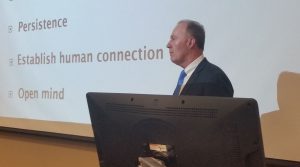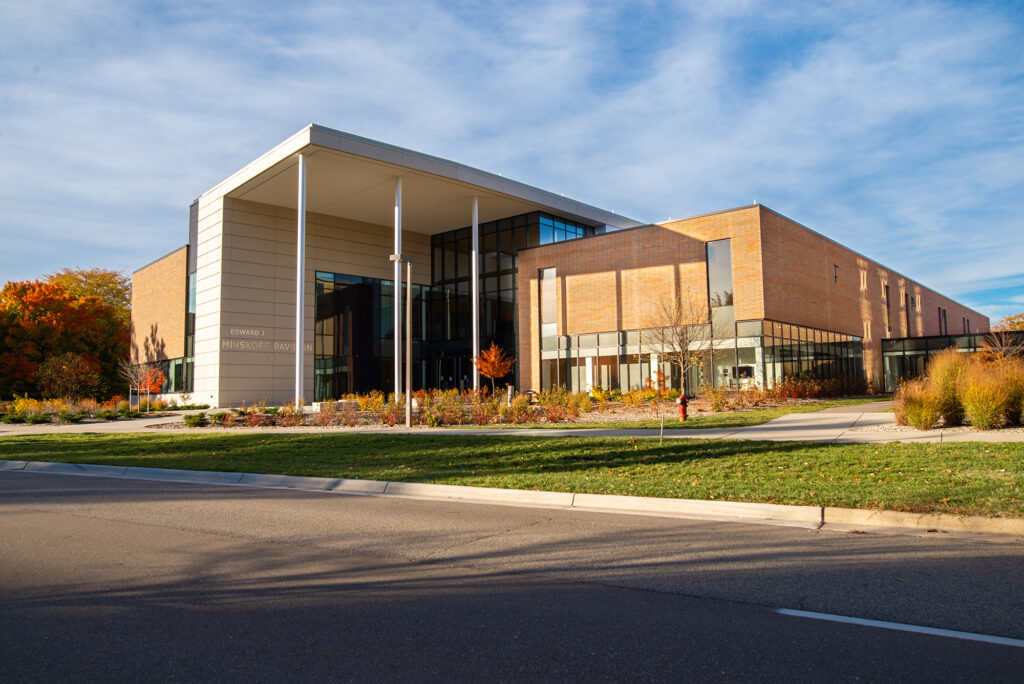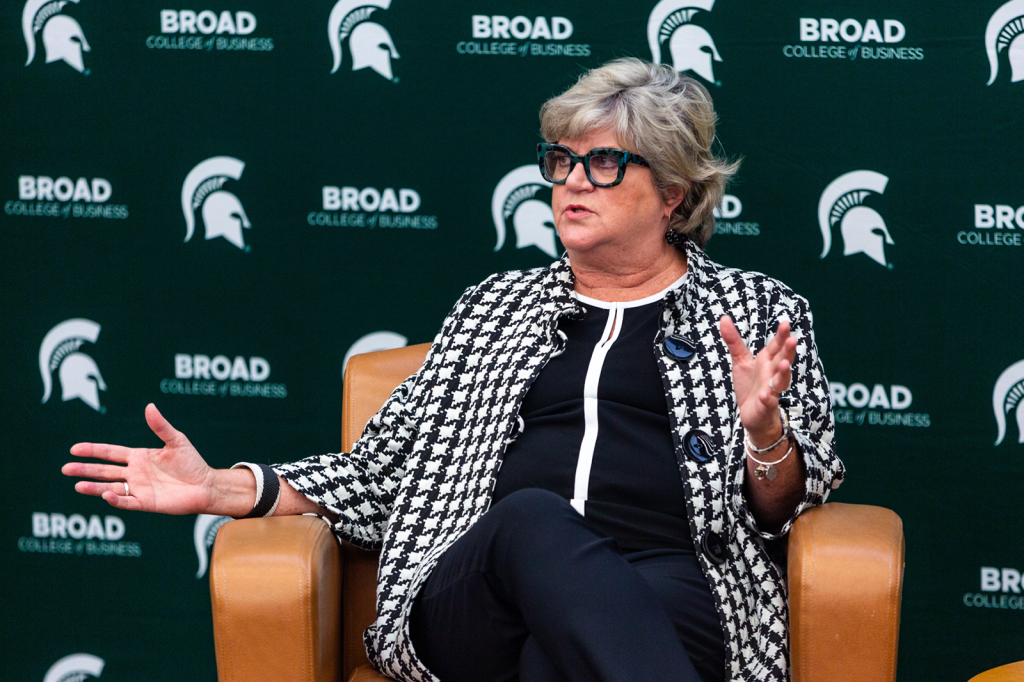Creativity isn’t the province simply of the so-called “creatives” in product development and marketing. Rather, the ability to be innovative in all the things a business does is critical to success in today’s economy.
That’s the advice of Jamie Gallagher, president and CEO of drawing and writing product-maker Faber-Castell USA, who shared his wisdom with Eli Broad College of Business Full-Time MBA students on Wednesday, Aug. 22. Faber-Castell is one of the world’s oldest industrial companies, having survived many evolutions in how people write and draw since its founding in 1761.

Jamie Gallagher
“We can be creative in any field. It’s not limited in any way other than the fact that it depends upon the judgment of that relevant field, and there’s got to be value in our creativity,” Gallagher told students. “Certainly, we know that creative product, and creative product is really, really important. But it’s really not enough. We need to creatively implement and manage and collaborate and engage and lead. We have to be creative in many, many facets of our business lives.”
“If I step back and look at what really drives creativity in business today, what makes the difference in those companies that aren’t just creative in terms of their creative output, but also in terms of their creative environment and how they’re solving problems creatively and how they’re coming up with new operating models creatively,” Gallagher said.
For example, Gallagher said “the most important group in our company right now for being creative” is supply chain management: “For us, as we look ahead, where do we need the creative thinkers in the company? We need them all throughout the company, not just in product development but also within disciplines such as supply chain.”
Creativity doesn’t happen in a vacuum; for it to flourish, businesses must host open environments, founded upon trust, Gallagher said.
“Your ability as a group to collaborate and to think creatively and work successfully together will in many ways be based upon the level of trust within that group,” he said. “If you have the trust, if you’re able to trust one another in that group, whether it be at school or in your company, with that trust you’re able to offer ideas. You’re able to take that chance. You’re able to offer something that maybe you would have held back otherwise.”
“The more we trust each other, the more open we can be. The more open we can be, the more we can reach our creative potential and our creative thinking potential,” Gallagher said.
Key to functioning in a creative environment are what Gallagher called the four C’s: communication, collaboration, creativity, and critical thinking. “This is really the foundation of what you need,” he said. “If you can communicate, if you can think critically, if you can collaborate with others and you can be creative, you’ve got a tremendous foundation not just for professional success, but I think also in terms of good citizenship as well.
A critical output of creativity is another C: context. “The real value is in the insight, and that’s the real challenge because we’ve got a ton of data. A lot of data points, a lot of places to get it, a lot of ways to look for it. Real time. Available,” Gallagher said. “But the real value is not in the data. The real value is in connecting those dots.”
“So if you can see it in a way that you can connect it, then you’re really bringing value to the table. When we look at opportunities in our business, we talk about the far-swinging pendulums (of change and evolution in consumer tastes), and we’ve seen this time and time again. If you look into the marketplace as we do, and if you see that pendulum that swung far, far to one side, it’s coming back.”
Creativity will also help leaders weather a volatile, uncertain future.
“Get comfortable operating in the gray. That’s where we’re going to be more and more and more, and that’s where we have to still be productive and that’s where we have to perform, and that’s where in fact we have to thrive, is in the gray,” Gallagher said. “There will be times we can live in the black and white but there’s so much gray out there … we need to be able to perform and we need to be able to get comfortable in that gray.”
“We can operate in a gray environment if we have trust, and if we’re open,” he said. “We can work our way through it.”




